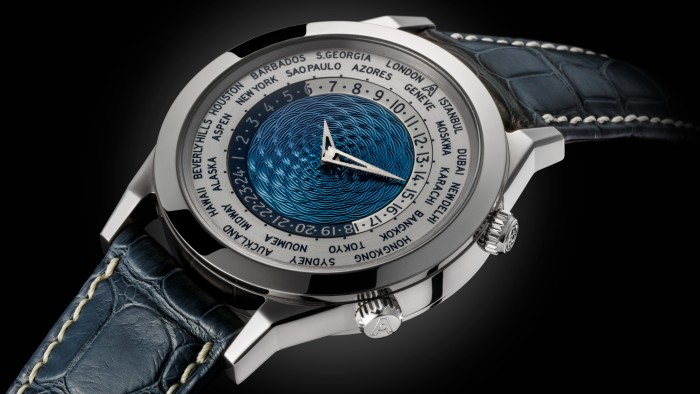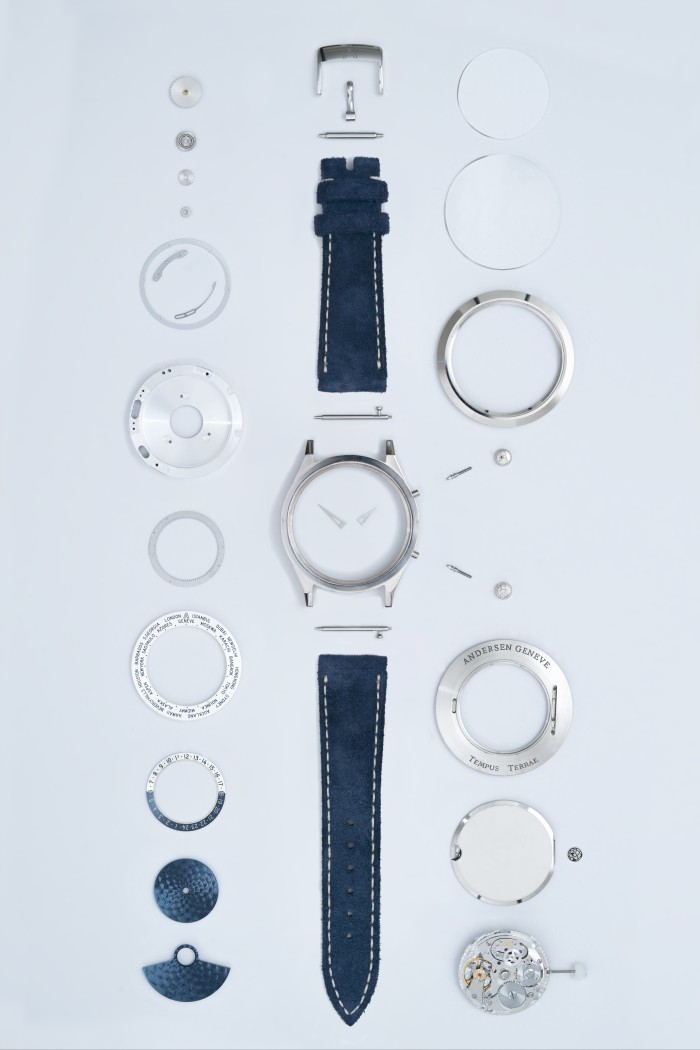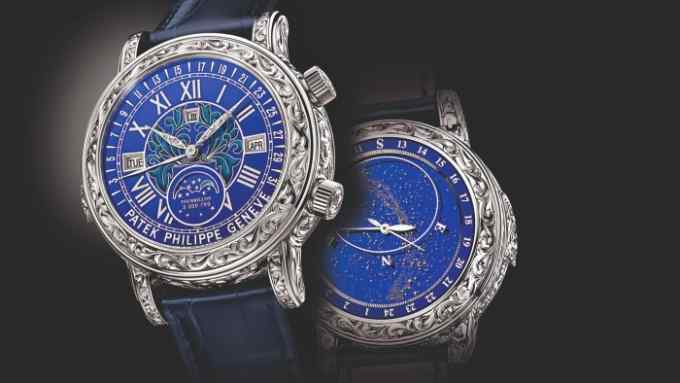Deconstructed watch: Andersen Genève Tempus Terrae

Roula Khalaf, Editor of the FT, selects her favourite stories in this weekly newsletter.
Anyone who has struggled even to replace a battery in a quartz watch will appreciate how difficult it must be to assemble the dozens of minuscule parts required to create a mechanical one — so imagine taking up the challenge to do so inside a bottle.
Back in 1969, Dane Svend Andersen did just that: using tiny, especially adapted tools he assembled a fully-working timepiece inside a bottle, which was shown at Switzerland’s Montres et Bijoux exhibition, the same year. This feat of dexterity immediately landed him a job with Patek Philippe.
Andersen’s skill took him to the revered brand’s complications department, where he became an expert on Patek’s world time watches. These use a fabled mechanism developed in the 1930s by horologist Louis Cottier that enabled a watch to show the correct hour in 24 different time zones simultaneously.
After Andersen left to set up his own, eponymous business in 1979 he spent a decade working on ways to improve the already impressive Cottier mechanism by making it simpler and easier to use, eventually launching his upgraded version a decade later in a watch called the Communication 24.
The world timer subsequently became Andersen’s signature complication and, in 1992, he created an edition of 500 world timers to mark 500 years since the discovery of the “New World” by Christopher Columbus.
Two years later he developed the Mundus series of 24 wristwatches, which remain the thinnest world timers ever made and, in 2004, the 1884 World Time, which marked 120 years since worldwide standard time was introduced at the International Meridian Conference.
Andersen continued designing, developing and making complicated watches until 2015 when he sold the business to watch-loving entrepreneur Pierre-Alexandre Aeschlimann. But, despite turning 82 next year, he still turns up for work in order to pass-on more than half-a- century of experience to the young watchmakers at the firm, now known as Andersen Genève.
His help proves especially invaluable in the creation of Andersen Genève’s current world time model, the Tempus Terrae.

The watch uses two crowns, one for winding and setting the watch, the other for adjusting the world time mechanism.
To use it, the chosen location on the city ring is moved to the 12 o’clock position using one crown, with the hands being set to local time using the other.
Doing so automatically synchronises the 24-hour ring with the rest of the marked cities, meaning the time almost anywhere in the world can be checked at a glance, with the dark half of the ring indicating night and the light half day.
The version of the Tempus Terrae shown here combines a hand-polished white gold case with a dial centre in so-called BlueGold, a combination of 24-carat gold and traces of iron that are baked together at high temperature.
The same process is used for the automatic winding rotor, while other movement parts are polished, chamfered, snailed or “tumbled” to create the high-end finishing that is a feature of all Andersen Genève watches.
Prices range from roughly £40,000 to £100,000, depending on materials and finish.

Comments